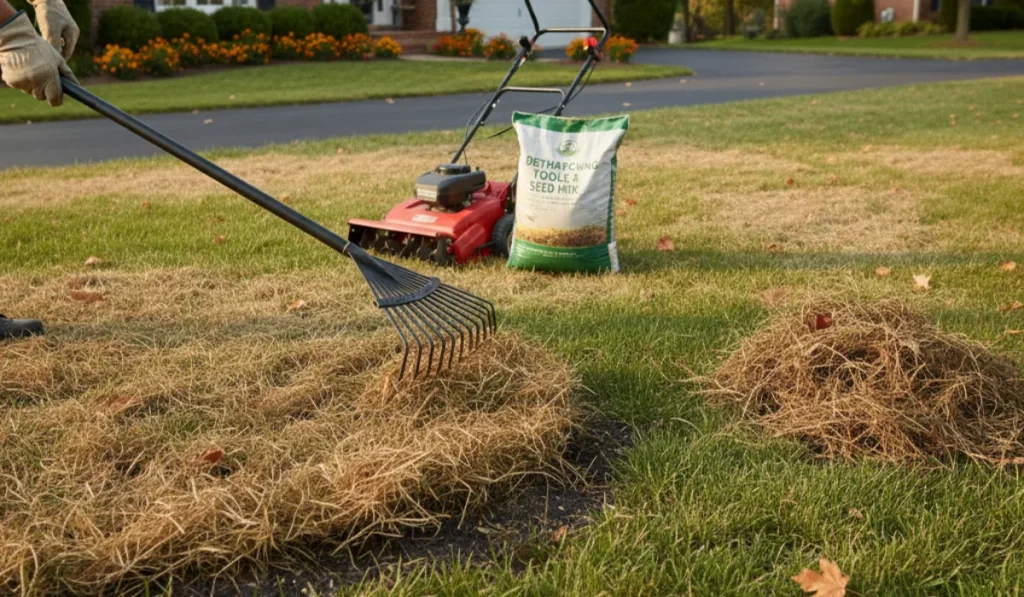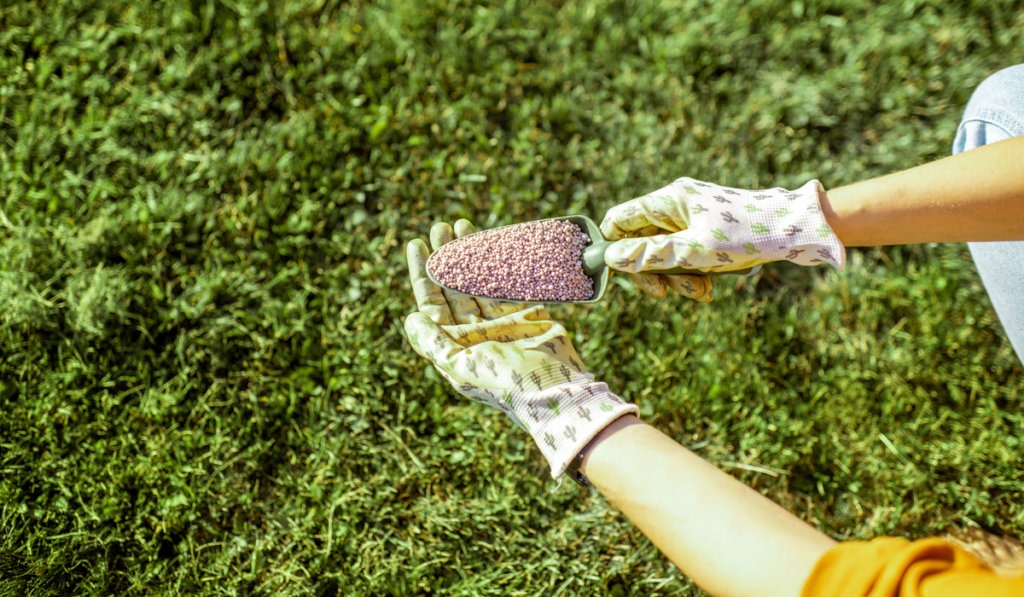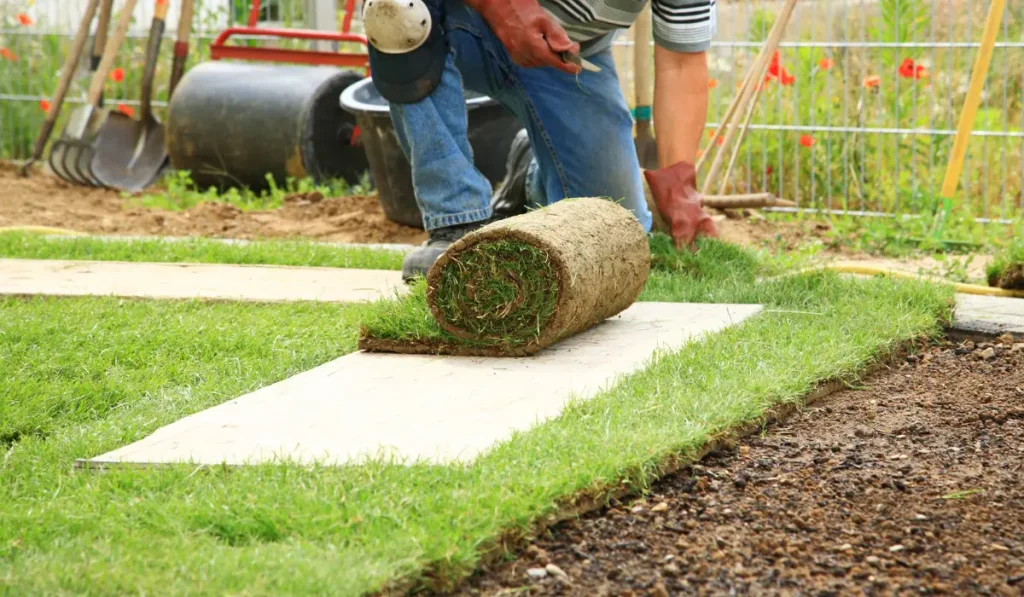If you’ve ever seeded your lawn only to watch hungry birds swoop in and make a meal of your efforts, you’re not alone.
Birds, especially finches, sparrows, and blackbirds, can quickly decimate a newly seeded area. In California, protecting your investment is essential if you want your new lawn to take root and thrive.
Here’s how to prevent birds from eating grass seed so your lawn has the best chance at successful germination.
Key Takeaways
- Birds are a big problem when planting grass seed in California, especially in yards with lots of bird activity.
- A thin layer of mulch, bird netting, or burlap can keep birds from reaching your seeded lawn area.
- Keeping the soil damp and adding decoys or motion sprinklers helps stop birds and supports seed germination.
- SodLawn provides the grass seed, tools, and advice you need to protect your lawn from birds and grow it right.
8 Ways to Prevent Birds From Eating Grass Seeds.
Use a Thin Layer of Mulch or Peat Moss
One of the easiest ways to keep birds from eating grass seed is to lightly cover the seeded area with straw mulch or peat moss. This creates a physical barrier that still allows sunlight and water to reach the seeds, which is key for germination.
In California’s drier regions, this top layer also helps the soil retain moisture.
Don’t apply it too thickly, just enough to obscure the seeds from view, but not smother them.
Install Bird Netting for Immediate Protection
Bird netting is a fast and effective bird deterrent, especially if you’re overseeding smaller patches or reseeding bare spots.
Secure the netting just above the soil using stakes or garden staples. This creates a physical barrier that prevents small birds from reaching the lawn seed while still allowing your sprinklers to do their job.
This is especially helpful in urban areas where bird populations are high and aggressive.
Keep the Soil Moist with Frequent, Light Watering
Birds are more likely to eat dry seeds sitting on the surface.
Once you’ve finished planting grass seed, keep the area consistently moist. Light, frequent watering not only encourages quicker seed germination but also makes the seeds less attractive as a food source.
In hot and arid parts of California, this step is critical for seed survival and for deterring birds that are looking for dry, easy meals.
Set Up Decoys to Confuse and Scare Birds
Visual deterrents like a plastic owl or bird of prey decoy can help scare off common seed-eating bird species. Move the decoy around the yard every couple of days to keep the birds from catching on.
In Southern California, combining decoys with other deterrents is usually more effective than using one method alone.
Offer Alternative Food Sources
If you have a particularly bird-heavy yard, consider placing bird feeders with sunflower seeds or millet far from your seeded area. This gives small birds a more appealing food source and keeps them away from your new grass seed.
Just make sure the feeder is well away from your new lawn. Think across the yard or behind a fence.
Use Burlap or Floating Row Covers
Burlap is a breathable material that can be gently laid over a freshly sown area to protect it from birds. It still allows sunlight and water to reach the soil, making it a viable short-term cover.
It’s a common method in agricultural regions of California where bird pressure is high and lawn care efforts can be easily disrupted.
Install a Motion-Activated Sprinkler System
California’s water-wise homeowners might already be familiar with motion-activated sprinkler systems. Not only do these save water by only activating when needed, but they also scare off birds as they approach the lawn.
It’s a non-harmful, eco-friendly way to stop birds without needing chemical bird repellent.
Aerate Before Seeding to Improve Seed-to-Soil Contact
Before you begin planting grass seed, core aerate your lawn. This creates small holes that protect the seed and help it settle into the soil better, reducing the amount of exposed seed that birds can access.
Better seed-to-soil contact also improves the odds of successful seed germination, especially in the compacted clay soils common throughout California.
Work With SodLawn to Protect Your Lawn
At SodLawn, we know how frustrating it is to lose grass seed to birds just days after spreading it. That’s why we offer expert lawn care advice and high-quality grass seed that’s optimized for California’s diverse climate zones.
Whether you’re reseeding bare spots or starting a brand-new lawn, we can help make sure your grass has the best chance to take root, and stay out of the beaks of hungry birds.
Get in touch with us today to order your grass seed and get tips for bird-proofing your lawn from the start.
Frequently Asked Questions
How long should I keep birds away after planting grass seed?
You should keep birds away for about three to four weeks until the grass seed has sprouted and developed enough root strength to no longer attract birds looking for easy food.
Can certain types of grass seed attract fewer birds?
Yes, some coated or treated grass seeds have taste or scent deterrents that make them less appealing to birds while still being safe for pets, people, and the environment.
Will birds damage young grass after it starts growing?
Most birds lose interest once grass begins growing, but heavy bird traffic can still lead to trampling and patchy areas, especially in lawns that haven’t fully thickened or established yet.



